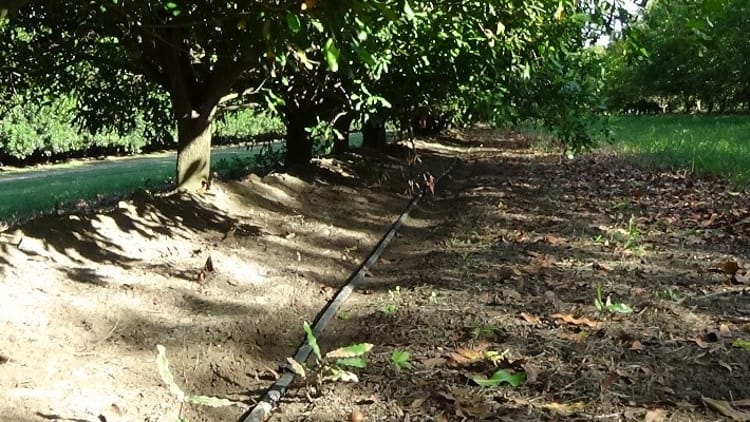Using Harvesting Machines With Drip Lines
During the recent 2019 harvest, Netafim set out to investigate the use of current harvesting machinery in orchards with multiple on-ground driplines. The results are promising and indicate that machinery and driplines may be compatible after all.
It is generally accepted that dripline irrigation has some attractive attributes compared to sprinkler irrigation. These include less evaporative losses which leads to greater water savings, less ongoing maintenance, and lower system flows which mean lower power costs. Evaporative losses of 30% are common in under-tree sprinkler systems, whereas such losses from surface driplines are only about 5%. In practice this means that to replace 4 mm of daily soil moisture loss, a sprinkler system would need to apply 6 mm of irrigation. Over an annual period, the extra irrigation applied to overcome the 30% evaporative losses during application type are significant. If a grower was applying 6 megalitres per hectare annually via sprinkler it could be assumed that as much as 2 megalitres per hectare would be lost before it ever entered the soil.
Sprinklers do have some attributes that many growers desire. Sprinklers can wet up a greater soil area compared to a single dripline and sprinklers are better at wetting surface organic matter.

Double dripline row with nuts ready to harvest
South African macadamia growers have been evolving dripline irrigation on mature macadamia trees for a number of years (see Winter 2019 News Bulletin story). They have developed a system that uses two driplines per tree row. This wets up a wider strip than a single dripline system, and it gets close to the wetted area provided by sprinklers. This is a highly productive system that has many of the benefits of both drip and sprinkler irrigation. A key difference in South Africa is that they harvest their macadamia nuts by hand - they do not use machine harvesters.



